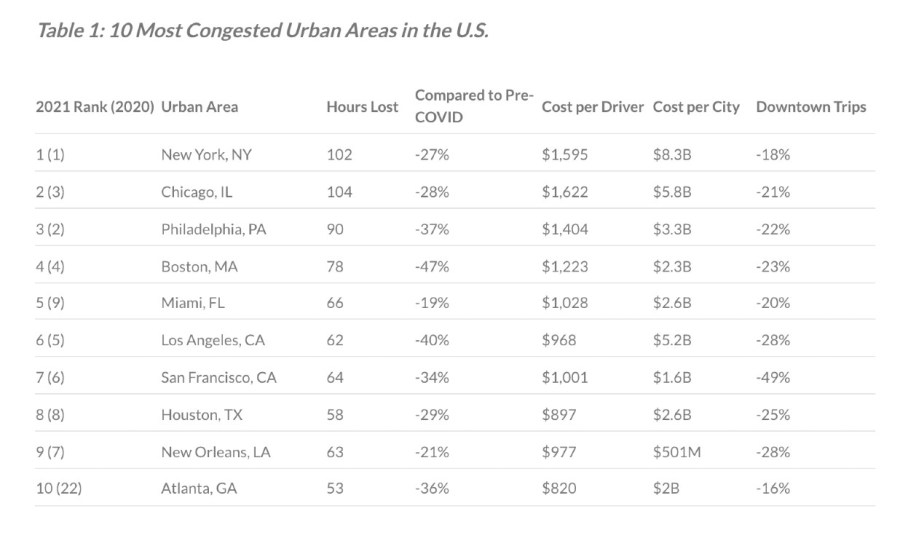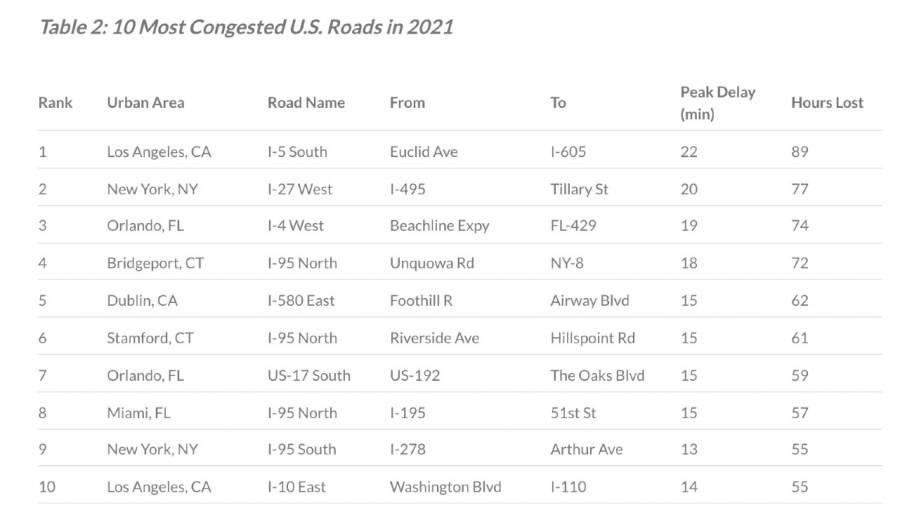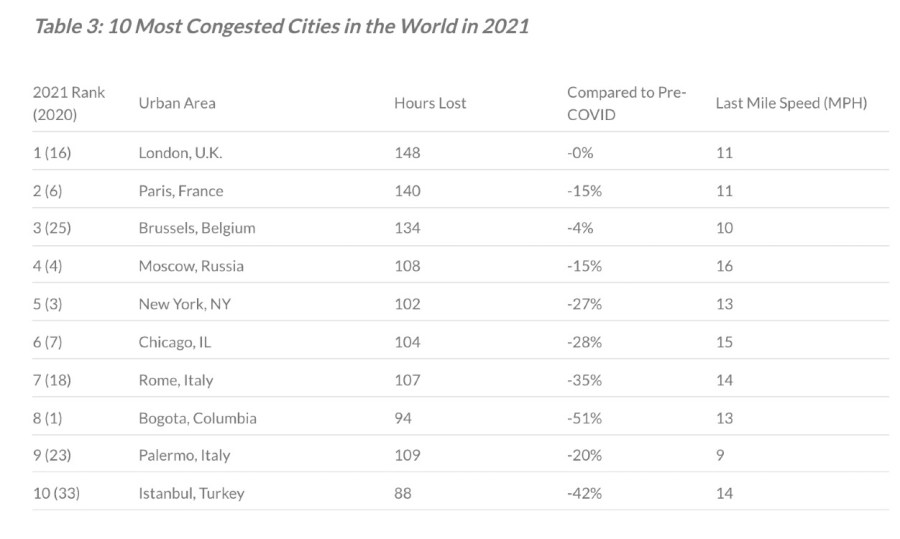As Los Angeles traffic continues to rebound in the aftermath of pandemic-related shutdowns, a new study released Wednesday by transportation data firm INRIX found that the city’s traffic is now the 6th worst in the U.S. and No. 33 globally.
On average, L.A. motorists are losing 62 hours to the gridlock, a figure that is nearly twice the nationwide amount of 36 hours, according to INRIX’s Global Traffic Scorecard. Traffic also cost drivers about $968 in 2021, which is also significantly higher than the national average of $564.
Plus, it’s expensive for the city, costing L.A. approximately $5.2 billion for 2021.
Traffic not as bad as before pandemic
The outlook wasn’t totally bleak for the region, however, with the new analysis revealing that Los Angeles motorists — like much of the rest of the country — have actually seen improved commute times compared to pre-pandemic levels.
In fact, L.A. dropped out of INRIX’s top five in terms of most congestion impact for 2021; the study found that New York City, Chicago, Philadelphia, Boston and Miami all had measurably more gridlock.
And while L.A.’s numbers are actually worse this year than in 2020, when COVID-19 stay-at-home orders kept many workers off the roads, congestion overall has dropped 40% since 2019 in the City of Angels. During that year, L.A. drivers faced the fifth worth traffic in the country, with travel costing the average commuter 103 hours, according to INRIX’s study.

That trend is hardly unique to L.A., however. Overall, U.S. motorists are experiencing reduced travel times on the roads, the analysis showed.
“COVID-19’s impact on transportation has continued through 2021, transforming when, where and how people move. Although congestion climbed 28% this year, Americans still saved 63 hours compared to normal,” Bob Pishue, an INRIX transportation analys, said in a news release from the company.
He noted that “the most notable change” involved traveling to downtown areas of major cities, which experienced a significant decline in trips as compared to before the pandemic.
In Los Angeles, travel to downtown dropped by 28% in 2021. That’s more than areas such as New York City and Chicago, but was much less than San Francisco, which saw a decrease of nearly 50%.
“Many employees have continued to work remotely throughout 2021, leading to high rates of telecommuting and fewer trips to downtowns,” INRIX’s release explained.
L.A. freeways still see some of nation’s worst delays
While L.A.’s traffic situation may have improved across the board, the city still has four of the nation’s busiest freeway corridors, including the top one in the U.S.
No. 1 on INRIX’s list of worst roads was the southbound 5 Freeway from Euclid Avenue to the 605 Freeway, which had the longest peak hour of delay of 22 minutes. Drivers whose afternoon commutes unfortunately took them through that stretch around 4 p.m. on a daily basis lost an average of 89 hours for the year, according to the study.
Coming in at No. 10 was the eastbound stretch of the 10 Freeway between Washington Boulevard and the 110 Freeway, witch had peak delays at 4 p.m. of 14 minutes that amounted to 55 hours lost.
One spot behind that is the northbound 405 Freeway between Santa Monica Boulevard and Valley Vista Boulevard, where peak delays at 4 p.m. were measured at 13 minutes and equaled about 54 hours lost.
The only other L.A.-area freeway to crack the top 25 was the southbound 101 between Santa Monica Boulevard and Alvarado Street, which took 14th place. That stretch also had peak delays of 13 minutes at 4 p.m., but drivers lost a little less time — about 51 hours for the year.























